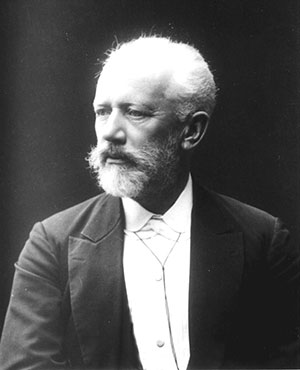 Each summer, orchestras and bands across the United States provide outdoor concerts that are quite popular amid the festivities of Independence Day. Curiously, one of the works featured frequently is the “1812 Overture” by Pyotr Il’yich Tchaikovsky. The bizarre tradition of including this quintessential Russian work on American patriotic concerts stems from the early 1970s in Boston.
Each summer, orchestras and bands across the United States provide outdoor concerts that are quite popular amid the festivities of Independence Day. Curiously, one of the works featured frequently is the “1812 Overture” by Pyotr Il’yich Tchaikovsky. The bizarre tradition of including this quintessential Russian work on American patriotic concerts stems from the early 1970s in Boston.
The overture’s scoring of church bells and cannon fire were believed to complement the subsequent fireworks and increase audience attendance. It has no connection to America’s War of 1812, but rather commemorates Napoleon’s retreat from Moscow.
From a religious perspective, the overture quotes an Orthodox chant. Tchaikovsky, though he had struggles with religion, penned numerous, though lesser known, sacred works, such as the “Liturgy of St. John Chrysostom” (1878) and “Hymn in Honor of Saints Cyril and Methodius” (1885).
In 1880, Tchaikovsky received a commission from Nicolay Rubinstein, director of the Moscow Conservatory. The work was to be connected to the consecration of the Cathedral of Christ the Savior, which was erected to honor the Russian victory over the French army – although it was more of a victory for Mother Nature, as the harsh Moscow winters were the primary cause of the French downfall.
The overture begins with soli for the violas and celli quoting the Orthodox chant “Save us, O Lord” – the low registers coupled with a slow tempo especially enhance the gravity of the opening. As the piece moves along, it assumes a more militant sound through the scoring for tambour militaire (snare drum) before “La
Marseillaise,” the French national anthem, appears to represent the French invasion. At the risk of being churlish, it’s worth noting that the anthem had been banned by Napoleon and reinstated only in 1815 and, thus, Tchaikovsky’s use of the tune is not historically accurate. A similar factual inconvenience arises at the end of the work, where the Russian national anthem “God Save the Tsar” is heard amid the blasting cannons. This anthem was composed in 1833 – two decades after the events of 1812.
Despite the facts that the “1812 Overture” has nothing to do with the U.S. and that the national anthems incorporated were not in use (or in existence) at the time the work is meant to be set, it remains one of Tchaikovsky’s most beloved works. Part of the appeal is the use of cannons, certainly a rarity in the symphonic … canon.
Tchaikovsky did not think much of this work, and most music critics agree with his assessment. However, he did conduct it himself several times.
His most beloved compositions, “Nutcracker” and the “1812 Overture,” are not actually representative of his compositional style, which is often quite serious and brimming with great emotion. A more accurate reflection of his symphonic style is his final symphony, nicknamed the “Pathetique,” which premiered only days before the composer fell ill. He eventually died under circumstances that remain unclear and are likely never to be known.
— Christina Reitz, Ph.D., Special to the Catholic News Herald
Listen online
Listen to a performance of the “1812 Overture”


